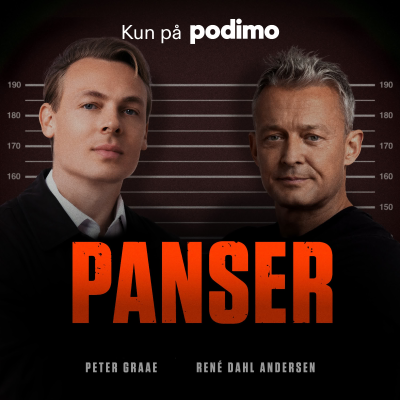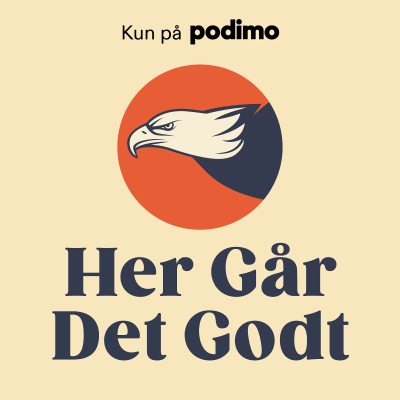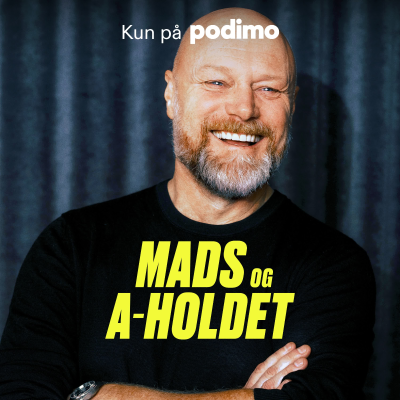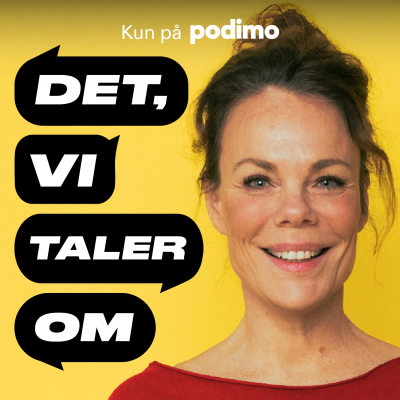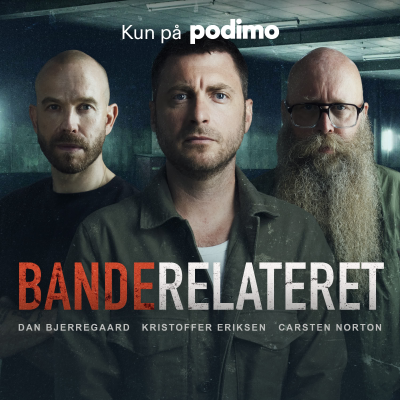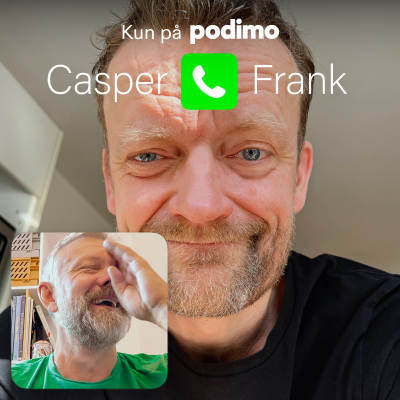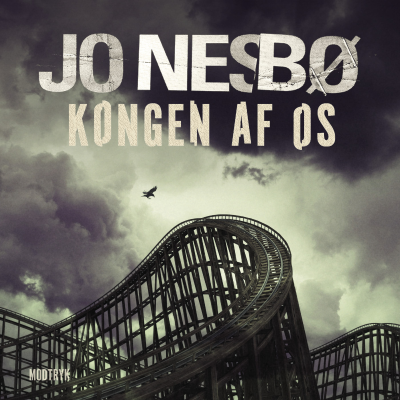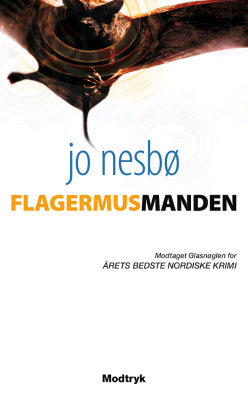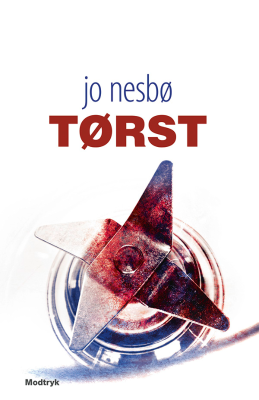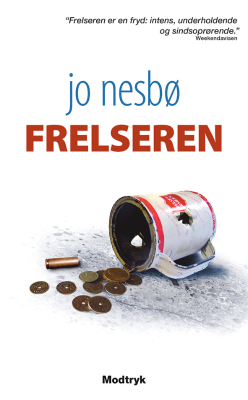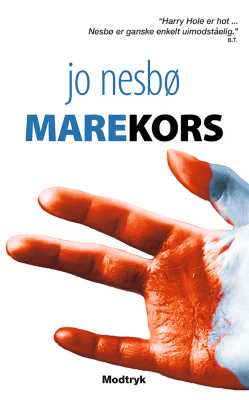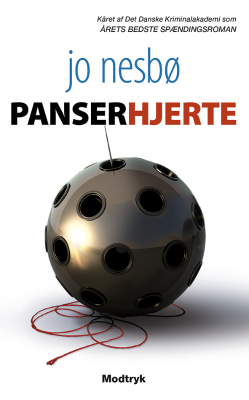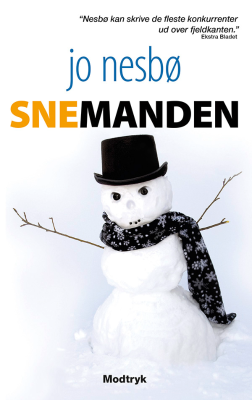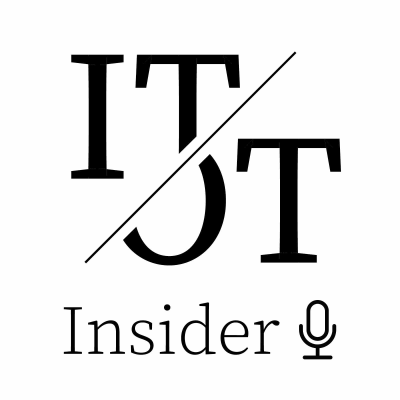
The IT/OT Insider Podcast - Pioneers & Pathfinders
engelsk
Business
Begrænset tilbud
3 måneder kun 9 kr.
Derefter 99 kr. / månedIngen binding.
- 20 lydbogstimer pr. måned
- Podcasts kun på Podimo
- Gratis podcasts
Læs mere The IT/OT Insider Podcast - Pioneers & Pathfinders
How can we really digitalize our Industry? Join us as we navigate through the innovations and challenges shaping the future of manufacturing and critical infrastructure. From insightful interviews with industry leaders to deep dives into transformative technologies, this podcast is your guide to understanding the digital revolution at the heart of the physical world. We talk about IT/OT Convergence and focus on People & Culture, not on the Buzzwords. To support the transformation, we discover which Technologies (AI! Cloud! IIoT!) can enable this transition. itotinsider.substack.com
Alle episoder
39 episoderFrom 4 to 140: What Building Northvolt’s Digital Core Taught Anton Melander About Scaling and Starting Over
📣 A quick reminder before we start: Our next https://itot.academyITOT.Academy [https://itot.academy] kicks off on January 23, and our early bird offer is still available. Do you want to join our third group and learn how to bridge IT and OT? There is no better time than now! 👉 Check the curriculum on https://itot.academyITOT.Academy [https://itot.academy] or in this previous article [https://itotinsider.substack.com/p/were-wrapping-up-our-first-two-itotacademy]. When Anton Melander joined Northvolt in 2018, the company had around 100 employees and zero factories. The goal? Build Europe’s first large-scale lithium-ion battery production from scratch — and do it fast. “When I joined, there was nothing. I joined the digitalization department, which at the time was me and three others,” Anton told us. “We knew making batteries was fast — really fast — and with tight tolerances. Even microns of misalignment could lead to short circuits. So we wanted to be as data-driven as possible when scaling production.” From that tiny team, Northvolt’s digitalization function grew to over 140 people, while the company itself ballooned to 5,000 employees. It’s a rare story (and one that ended too soon, after Northvolt’s bankruptcy earlier this year). But in those years, Anton learned what it truly means to build an OT organization from nothing, and why many of those lessons are now shaping his next chapter as a startup founder. Thanks for reading The IT/OT Insider! Subscribe for free to receive new posts and support our work. Greenfield Decisions Northvolt’s early advantage was also its biggest challenge: a completely blank slate. “We had to figure out what to build and what to buy,” Anton said. “Off-the-shelf software meant long requirement lists, consultants, and change orders. Building in-house gave us flexibility, but it also meant taking full ownership.” At the time, OPC UA was only beginning to gain traction. Northvolt pushed its equipment suppliers to provide compliant servers and built its own IoT platform to handle the data. “We provisioned over a thousand gateways,” Anton recalled. “Just setting that up was a project in itself.” That internal platform became the backbone of production — the foundation of what they later called North Cloud, an internal MES connecting operations, quality, and material flow. “We built a lot ourselves,” Anton said, “but we still leveraged AWS for the cloud, and bought things like ERP and PLM. It was a mix, but a deliberate one.” From Projects to Products As production ramped up, the company’s digital organization had to evolve. “In the beginning, we were completely project-based,” Anton explained. “But as production started, we realized that technology is one thing — it’s only useful if it actually helps people do their job. So we moved from a project-oriented way of working into a product-oriented one.” That shift (which many IT/OT teams wrestle with) required a mindset change. “Everyone wants their feature,” he said. “The backlog keeps growing forever. But not everything that sounds important actually moves the needle. You need to tie initiatives to measurable results: quality, throughput, yield.” He laughs looking back. “Sometimes senior stakeholders would say, ‘This is the most important thing,’ and you had to tell them: ‘It’s not going to increase throughput or quality.’ That’s the hard part.” His other big lesson? Master data. “You can’t calculate OEE if you don’t know the ideal cycle time. You can’t calculate downtime if you don’t know the planned uptime. It’s easy to draw perfect architecture diagrams, it’s harder to make them work in practice.” What Comes After Northvolt Anton left Northvolt in 2023, before its final collapse, but the experience left him with two realizations: first, that building your own tech stack is both empowering and costly and second, that most manufacturers will never have that luxury. “More than 90 percent of manufacturing companies have fewer than 200 employees,” he said. “They can’t hire 140 people to build their own MES or IoT platform. And yet, they still need data.” That insight became the starting point for his new company, Ronja [https://www.ronja.tech/], which focuses on helping small and mid-sized manufacturers make sense of the data they already have. “We’ve spoken to more than 300 manufacturers since we started,” Anton told us. “Almost all of them say the same thing: they have lots of data, but they’re not using it. The problem isn’t collecting data, it’s getting value out of it.” Ronja’s approach isn’t to replace systems, but to sit on top of what exists, making data accessible to non-technical users. “In most factories,” he said, “data lives in Excel, in emails, in historians. We help people connect it, visualize it, and analyze it faster — without waiting for a two-year MES rollout that eats the entire budget.” Closing Thoughts Northvolt’s story is one of ambition and hard-earned lessons: a company that built everything from scratch, scaled fast, and still couldn’t outrun industrial reality. But its alumni, like Anton, carry those lessons forward. His takeaway applies to anyone working on digital transformation, from startups to global enterprises: “The closer you are to the shopfloor, the more unique every factory becomes. You can’t standardize everything — but you can make it easier to understand, to learn, and to improve.” And that, ultimately, is what industrial digitalization has always been about. Stay Tuned for More! 🚀 Join the ITOT.Academy → [https://itot.academy] Subscribe to our podcast and blog to stay updated on the latest trends in Industrial Data, AI, and IT/OT convergence. 🚀 See you in the next episode! Youtube: https://www.youtube.com/@TheITOTInsider [https://www.youtube.com/@TheITOTInsider] Apple Podcasts: Spotify Podcasts: Disclaimer: The views and opinions expressed in this interview are those of the interviewee and do not necessarily reflect the official policy or position of The IT/OT Insider. This content is provided for informational purposes only and should not be seen as an endorsement by The IT/OT Insider of any products, services, or strategies discussed. We encourage our readers and listeners to consider the information presented and make their own informed decisions. This is a public episode. If you would like to discuss this with other subscribers or get access to bonus episodes, visit itotinsider.substack.com [https://itotinsider.substack.com?utm_medium=podcast&utm_campaign=CTA_1]
Industrial Data and AI through the eyes of an End-User – A Conversation with Nathalie Rigouts
In our earlier articles, we laid the groundwork for Industrial AI — breaking down the difference between classic AI, generative AI, and agentic AI. But frameworks alone don’t tell the full story. How do these ideas play out when you’re inside a real industrial company, tasked with building teams, getting budget, and making data actually deliver value? For that perspective, we sat down with Nathalie Rigouts, who until recently headed data and analytics at Borealis and is now Head of Business Applications Data and AI at Umicore. Nathalie brings a refreshing, pragmatic voice — someone who moved from finance into IT, and who knows first-hand the reality of building data capabilities in industry. From Finance to Data & AI Nathalie didn’t start in IT. Her background is in finance, where every month she wrestled with massive spreadsheets just to get accurate actuals. That pain, she recalls, was the start of her data journey: “Every month again, I was struggling with getting the correct actuals. And then of course, you have to make your forecast.” From implementing a financial planning tool, to establishing BI at Borealis, to eventually leading data and analytics, her path shows how close the link is between business need and IT capability. And she’s clear about the lesson: it’s not about technology for its own sake. “It’s not about implementing Microsoft Copilot. You’re not going to gain any sustainable advantage there. But if you can have a deep understanding of the processes in your company, and where data-driven solutions can help, that’s when you start to create value.” Start Small, Sell the Success One of the recurring themes in Nathalie’s story is pragmatism. At Borealis, the team started in 2016 with literally one data scientist and a laptop. “Python notebooks on a laptop, and we started.” The key, she says, is to find enthusiastic allies and solve problems that matter. And once you do, don’t stay modest: market the success internally. “We often forget to sell our success. I would go everywhere and talk about small things we did. And that’s how you gain support for the next steps.” From that first laptop, the team grew, but only because each step came with visible, tangible wins that created pull from the business. Use Cases That Matter So what are typical use cases in manufacturing? Nathalie sees three common ones: * Predictive maintenance: “If equipment fails often, anomaly detection and predictive maintenance are obvious first steps. But it’s not an easy nut to crack. Often, you don’t have enough failures to feed a model.” * Quality control with computer vision: mainstream, but effective. With enough annotated pictures, good vs bad quality can be classified quickly. The catch? Data Quality. * Logistics optimization: untangling shipping routes and optimizing delivery to customers with AI-based optimization models. These are concrete, valuable problems — and they also highlight the role of data governance. As she recalls with a smile: “We had beautifully annotated data — but all in Finnish. That’s when you realize governance is not optional.” GenAI: Efficiency or Attractiveness? When it comes to Generative AI, Nathalie is cautious. The business case is not always straightforward: “I tried to make the case for Microsoft Copilot. At €30 per user, that’s not small. Does it reduce workforce? No. At best, people spend more time on value-added activities. But what does that bring to the bottom line? Hard to say.” Yet she also sees why companies can’t ignore it. “Companies have to invest in it because it will determine their attractiveness as an employer. New graduates take these tools for granted. If you don’t offer them, you won’t attract talent.” She distinguishes between two levels: workplace efficiency (nice, but hard to quantify) and domain-specific models trained on your own IP. The latter, she believes, is where the real value lies. For example in pharma, where LLMs trained on internal knowledge can speed up R&D. “That’s when AI becomes a true digital co-worker.” Governance, Change, and Legislation On governance, Nathalie doesn’t mince words: “It’s always the people, the processes, and the tools. The main component around which all of them center is the value case.” Her advice: don’t let your solutions depend on a single enthusiast, and don’t leave an escape hatch back to the old way of working. Change management is part of the job. And on legislation, she takes a positive view: “It’s an opportunity. It forces us to think about awareness, ethics, governance, documentation, monitoring. All things that make sense. Yes, it’s work, but it helps you get budget and build maturity.” Closing Thoughts What we loved about Nathalie’s perspective is how grounded it is. No buzzwords, no silver bullets: just the reality of building teams, solving problems, and learning along the way. Whether it’s predictive maintenance, quality monitoring, or navigating the GenAI hype. Her closing reminder: “Keep it simple, be pragmatic. We built beautiful solutions with just scripting business rules. The business was happy, and nobody needed a fancy machine learning model.” Stay Tuned for More! 🚀 Join the ITOT.Academy → [https://itot.academy] Subscribe to our podcast and blog to stay updated on the latest trends in Industrial Data, AI, and IT/OT convergence. 🚀 See you in the next episode! Youtube: https://www.youtube.com/@TheITOTInsider [https://www.youtube.com/@TheITOTInsider] Apple Podcasts: Spotify Podcasts: Disclaimer: The views and opinions expressed in this interview are those of the interviewee and do not necessarily reflect the official policy or position of The IT/OT Insider. This content is provided for informational purposes only and should not be seen as an endorsement by The IT/OT Insider of any products, services, or strategies discussed. We encourage our readers and listeners to consider the information presented and make their own informed decisions. This is a public episode. If you would like to discuss this with other subscribers or get access to bonus episodes, visit itotinsider.substack.com [https://itotinsider.substack.com?utm_medium=podcast&utm_campaign=CTA_1]
MQTT vs OPC UA with Kudzai Manditereza
When we talk about industrial connectivity, two names always come up: OPC UA and MQTT. They’re often mentioned in the same breath, as if they’re competitors. But as Kudzai Manditereza reminded us in our conversation, that’s a bit of a misconception. These protocols solve different problems, and understanding their history helps explain why they’re both so important today. OPC UA: From Printer Drivers to Industrial Standards The story of OPC goes back to the 1990s. At the time, every automation vendor shipped their own drivers, making integration a nightmare. The OPC Foundation stepped in to create a standardized interface — inspired, of all things, by Microsoft’s printer driver model. Just as Windows could talk to any printer through a standard interface, OPC offered a way for SCADA systems and historians to talk to PLCs without custom drivers. Thanks for reading The IT/OT Insider! Subscribe for free to receive our weekly articles directly in your mailbox! The first generation, known as OPC Classic (DA/HDA), was Windows-only and limited in scope. It solved the immediate problem but couldn’t handle the growing complexity of industrial data. Enter OPC UA (Unified Architecture): cross-platform, internet-capable, and built with powerful information modeling. This is where OPC really shines. As Kudzai put it: “The shop floor is full of objects — pumps, compressors, machines. OPC UA lets you model those objects, not just pass around raw tags.” That means a machine builder can ship a unit with a pre-built OPC UA information model, ready for plug-and-play integration. The OPC Foundation even created companion specifications for different industries, so a compressor in Germany “speaks” the same OPC language as a compressor in the US. No more reinventing interfaces for every project. MQTT: Born in the Oil Fields, Adopted by the Internet If OPC UA came from printer drivers, MQTT came from oil pipelines (well… actually from the even older pub-sub newsgroups back when the internet was still something really special). In 1999, IBM engineers developed MQTT to monitor pipelines over unreliable, low-bandwidth satellite links. The key innovation was the publish/subscribe model: instead of clients constantly polling servers for updates, devices publish data to a central broker, and anyone interested can subscribe. This lightweight, bandwidth-efficient design made MQTT perfect for remote monitoring. But it didn’t stay confined to industry. In fact, one of its biggest early adopters was Facebook, who used MQTT in their Messenger platform. By the 2010s, MQTT had made its way back to industry, now riding the wave of IIoT and event-driven architectures. As Kudzai explained: “MQTT doesn’t tell you how to model your data. It’s a transport protocol. But its hierarchical topic structure maps naturally to concepts like the Unified Namespace [https://itotinsider.substack.com/p/the-unified-namespace-uns-demystified] (UNS).” Think of it like a Google Drive folder structure: data is organized into topics, and anyone can subscribe to the parts they care about. OPC UA vs MQTT: Different Tools, Different Jobs So should you pick OPC UA or MQTT? The answer is: both, but for different layers. * OPC UA excels close to the machines (Levels 0–2 in the Purdue [https://itotinsider.substack.com/p/isa-95-and-the-purdue-model-explained] Model). It provides a rich, standardized way to model and expose machine data. Perfect for SCADA, DCS, and local control. * MQTT shines at higher levels (L3/DMZ and above). It’s ideal for integrating thousands of devices into enterprise systems, feeding data lakes, or enabling event-driven architectures. And of course also for IIoT devices spread around the world! As Kudzai put it: “You’ll never control a pump with MQTT. But if you want to share events across your enterprise (machine status, recipes, quality data,…) MQTT is a great fit.” And that’s an important distinction. OPC UA is about structured access to objects. MQTT is about lightweight distribution of events. They don’t replace each other — they complement each other. Closing Thoughts Industrial connectivity isn’t about choosing one protocol over the other. It’s about using the right tool for the job. OPC UA and MQTT are part of the same toolbox — and when used together, they unlock scalable, reusable, event-driven architectures that finally let IT and OT speak the same language. As Kudzai summed it up: “The ability to reuse data is a huge factor. Once you stop thinking point-to-point and start thinking platform, that’s when scale happens.” … And we couldn't agree more! Also, take a look what HiveMQ has to offer: Stay Tuned for More! 🚀 Join the ITOT.Academy → [https://itot.academy] Subscribe to our podcast and blog to stay updated on the latest trends in Industrial Data, AI, and IT/OT convergence. 🚀 See you in the next episode! Youtube: https://www.youtube.com/@TheITOTInsider [https://www.youtube.com/@TheITOTInsider] Apple Podcasts: Spotify Podcasts: Disclaimer: The views and opinions expressed in this interview are those of the interviewee and do not necessarily reflect the official policy or position of The IT/OT Insider. This content is provided for informational purposes only and should not be seen as an endorsement by The IT/OT Insider of any products, services, or strategies discussed. We encourage our readers and listeners to consider the information presented and make their own informed decisions. This is a public episode. If you would like to discuss this with other subscribers or get access to bonus episodes, visit itotinsider.substack.com [https://itotinsider.substack.com?utm_medium=podcast&utm_campaign=CTA_1]
The $50K use case matters – Zev Arnold on Scaling, Context and AI
When Zev Arnold [https://www.linkedin.com/in/zevarnold/] joined us on the podcast, he brought with him the kind of energy and clarity you rarely get from someone working at the intersection of industry, data, and transformation. As a principal director at Accenture’s Industry X, Zev has spent years working with oil & gas, utilities, mining, and life sciences companies—not just helping them digitize, but helping them make that digitization mean something operationally. “I help engineers and operators use data to improve the way they work,” he said, and that theme stayed with us throughout the conversation. Context is King (But only if the right person owns it) One of the most powerful insights from Zev is his perspective on data contextualization. He tells the story of a compressor engineer who wanted to track starts instead of doing maintenance on a fixed schedule. “Some compressors had start-stop tags, some had rotational speed. The structure of the data needed to support the engineer’s thinking, not the other way around.” That’s when Zev realized: contextualization only works when it’s driven by the user, not imposed by some else. “Give that hierarchy to the compressor engineer and say, this is yours. Own it.” In Zev’s model, self-service is the enabler. If engineers and operators can build their own analytics without writing Python or waiting for a dev team, that’s when transformation becomes real. Platforms that Empower, Not Obstruct Zev is quick to point out where industrial transformation often stumbles: platforms that weren’t built to scale use cases easily. “We had a platform that worked great for one use case. But every new use case required us to rebuild everything again.” “You want to catch that $50K event before it becomes an environmental incident. The person who understands the problem best is the engineer. We need to give them the tools to act.” The bigger picture? Zev sees a future where operators train and maintain AI systems—even simple expert systems that alert you when a tank overflows. That’s where AI becomes more than a buzzword and actually enters the DNA of industrial work. People, AI, and the Future of Work Zev introduces a compelling framing: people-to-people, people-to-AI, and AI-to-AI. That’s the triangle of future industrial collaboration. A model he borrowed from Paul Daugherty’s book Human + Machine [https://www.accenture.com/be-en/insights/technology/human-plus-machine]. In this framing, AI isn’t replacing people. Instead, AI becomes part of their toolbox. “Even simple AI—like monitoring sump tank levels—needs someone to train and maintain it,” he says. That job doesn’t belong in a remote digital transformation office. It belongs on the floor, with the engineer who knows the equipment and the impact. Thanks for reading The IT/OT Insider! Subscribe for free to receive new posts and support our work. We just need to catch the real value Is all this really worth it? Zev answers emphatically, yes. And he points to a hard number: EFORd, the forced outage rate in U.S. power generation. This is a metric used to assess the reliability of thermal power generating units, specifically measuring the probability of a unit being unavailable due to forced outages or deratings when there is a demand for power. It essentially indicates how often a generator is unable to produce power when it's needed. The EFORd rate in the US averages 7.5% (a theoretical 0 value would mean that there are no unplanned outages). If we could close that gap with better decisions, the industry could unlock over $100 billion in value. “And that’s just one industry,” Zev adds. “The ripple effects could be societal: better data centers, climate impact, lower energy bills, even job growth.” Final Thoughts From the subtle distinctions between manufacturing types to the very real, tangible impact of good data and AI done right, we touched it all in this podcast. Whether it’s process or discrete, the message is clear: stop treating transformation like a side project. Get the right tools into the right hands—and let people do what they do best. As Zev put it, “On my worst days, I wonder, is this data really valuable? But 15 years in, I know it is. We just have to use it right.” Stay Tuned for More! 🚀 Join the ITOT.Academy → [https://itot.academy] Subscribe to our podcast and blog to stay updated on the latest trends in Industrial Data, AI, and IT/OT convergence. 🚀 See you in the next episode! Youtube: https://www.youtube.com/@TheITOTInsider [https://www.youtube.com/@TheITOTInsider] Apple Podcasts: Spotify Podcasts: Disclaimer: The views and opinions expressed in this interview are those of the interviewee and do not necessarily reflect the official policy or position of The IT/OT Insider. This content is provided for informational purposes only and should not be seen as an endorsement by The IT/OT Insider of any products, services, or strategies discussed. We encourage our readers and listeners to consider the information presented and make their own informed decisions. This is a public episode. If you would like to discuss this with other subscribers or get access to bonus episodes, visit itotinsider.substack.com [https://itotinsider.substack.com?utm_medium=podcast&utm_campaign=CTA_1]
OT Cybersecurity 101 with Danielle Jablanski
📣 Have you already considered joining our ITOT.Academy [https://itot.academy] ? We tell stories. We focus on concepts, not tools.On frameworks, not features.👉 Check out our podcast [https://itotinsider.substack.com/p/were-launching-the-itotacademy-and] to learn more ! If you’re still thinking of OT cybersecurity as “just” another IT checklist item, it’s time to rethink the whole game. In this episode of the IT/OT Insider podcast, David is joined by Danielle Jablanski [https://www.linkedin.com/in/daniellejjablanski/] — cybersecurity strategist, OT advocate, and all-around force in the industrial cyber world — for a grounded conversation on what cybersecurity in industrial systems really means, why it’s not a product or checklist, and how to approach it without getting lost in the buzzwords. Danielle brings not only deep knowledge but also practical field insight from her time at CISA [https://www.cisa.gov/], Nozomi Networks [https://www.nozominetworks.com/], and now STV [https://stvinc.com/]. What is OT Cybersecurity Anyway? OT (Operational Technology) isn’t just ICS (Industrial Control Systems) anymore. “OT now represents a broad set of technologies that covers process automation, instrumentation and field devices, cyber-physical operations, and industrial control systems,” Danielle explains. From water utilities and power grids to baggage claim systems and digital parking meters, these systems form the backbone of our critical infrastructure. And unlike IT systems, the primary concern isn’t just data breaches—it’s real-world, physical consequences. “Segmentation is King” Danielle is clear: “For the last five or six years, I've always said segmentation is king. I still think it's paramount.” But that doesn’t mean it’s easy or one-size-fits-all. The problem? Too many organizations buy visibility tools but neglect the basics like firewall rules or sound architecture. As Danielle notes, “You can't do any type of root cause analysis if you're not incorporating your entire operation into your purview.” Her takeaway: start with effects-based thinking. “Focus on the effect of something rather than the means.” By the way, did you know our very first post on this blog was about the Purdue model? Check it out here: No More Choose-Your-Own-Adventure Security Danielle challenges a common trap: jumping into cybersecurity with no strategy. “There’s this leap to: I want a pen test, I want incident response, I want this, this, this. But are people even ready for a 150-page pen test that tells you everything you might want to fix over the next 10 years?” Instead, she advocates for needs assessments, crown jewel analysis, and understanding fault tolerance. She says, “You need to understand what is impossible, what is not plausible… you can't do that without really getting to root cause analysis.” Thanks for reading The IT/OT Insider! Subscribe for free to receive new posts and support our work. The Good, the Bad, and the Pointless Deliverables When asked about good versus bad deliverables, Danielle doesn’t hold back: “A red flag? People rush to procure tools.” In contrast, green flags are often simple: “What forensic capacity do you have? What logs are you keeping? What’s your retention policy?” And watch out for this one: “Our integrator is responsible for cybersecurity.” That’s a red flag unless you’ve built a mechanism to test and verify that assumption. Starting a Career in OT Security For anyone curious about stepping into the field, Danielle’s advice is encouraging and honest. “You can take any interested person and train them based on their interest and their aptitude.” She recommends free online resources like learn.automationcommunity.com [https://learn.automationcommunity.com] and Grady Hillhouse’s Engineering in Plain Sight. Her bottom line? “Do whatever you're interested in and do it as much as your resources allow for.” Why It Matters Throughout the conversation, Danielle keeps it grounded: OT cybersecurity isn’t about buying the latest tool or chasing the latest threat report. It’s about resilience, design, human capacity, and real-world impact. “All the tools in the world are not going to help you if you haven’t built the scaffolding.” Or, to put it more bluntly: this isn’t a choose-your-own-adventure. It’s about picking a strategy and sticking to it. Let us know what you thought of this episode and if you want more cyber content, get in touch. Like we promised during the episode, this topic is too important and we haven’t touched OT Cyber Sec enough… So we’ll be launching a full cybersecurity series later this year. Extra Resources * Find Danielle on LinkedIn: https://www.linkedin.com/in/daniellejjablanski/ [https://www.linkedin.com/in/daniellejjablanski/] * Free learning: learn.automationcommunity.com [http://learn.automationcommunity.com] * Grady Hillhouse’s book: Engineering in Plain Sight * Copenhagen Industrial Cybersecurity Event : https://insightevents.dk/isc-cph/ [https://insightevents.dk/isc-cph/] Danielle’s talk at SANS: And see also https://www.sans.org/blog/a-visual-summary-of-sans-ics-summit-2023/ [https://www.sans.org/blog/a-visual-summary-of-sans-ics-summit-2023/] for this stunning visual summary of her talk: Stay Tuned for More! 🚀 Join the ITOT.Academy → [https://itot.academy] Subscribe to our podcast and blog to stay updated on the latest trends in Industrial Data, AI, and IT/OT convergence. 🚀 See you in the next episode! Youtube: https://www.youtube.com/@TheITOTInsider [https://www.youtube.com/@TheITOTInsider] Apple Podcasts: Spotify Podcasts: Disclaimer: The views and opinions expressed in this interview are those of the interviewee and do not necessarily reflect the official policy or position of The IT/OT Insider. This content is provided for informational purposes only and should not be seen as an endorsement by The IT/OT Insider of any products, services, or strategies discussed. We encourage our readers and listeners to consider the information presented and make their own informed decisions. This is a public episode. If you would like to discuss this with other subscribers or get access to bonus episodes, visit itotinsider.substack.com [https://itotinsider.substack.com?utm_medium=podcast&utm_campaign=CTA_1]
Vælg dit abonnement
Begrænset tilbud
Premium
20 timers lydbøger
Podcasts kun på Podimo
Gratis podcasts
Ingen binding
3 måneder kun 9 kr.
Derefter 99 kr. / måned
Premium Plus
100 timers lydbøger
Podcasts kun på Podimo
Gratis podcasts
Ingen binding
Prøv gratis i 7 dage
Derefter 129 kr. / måned
3 måneder kun 9 kr. Derefter 99 kr. / måned. Ingen binding.

